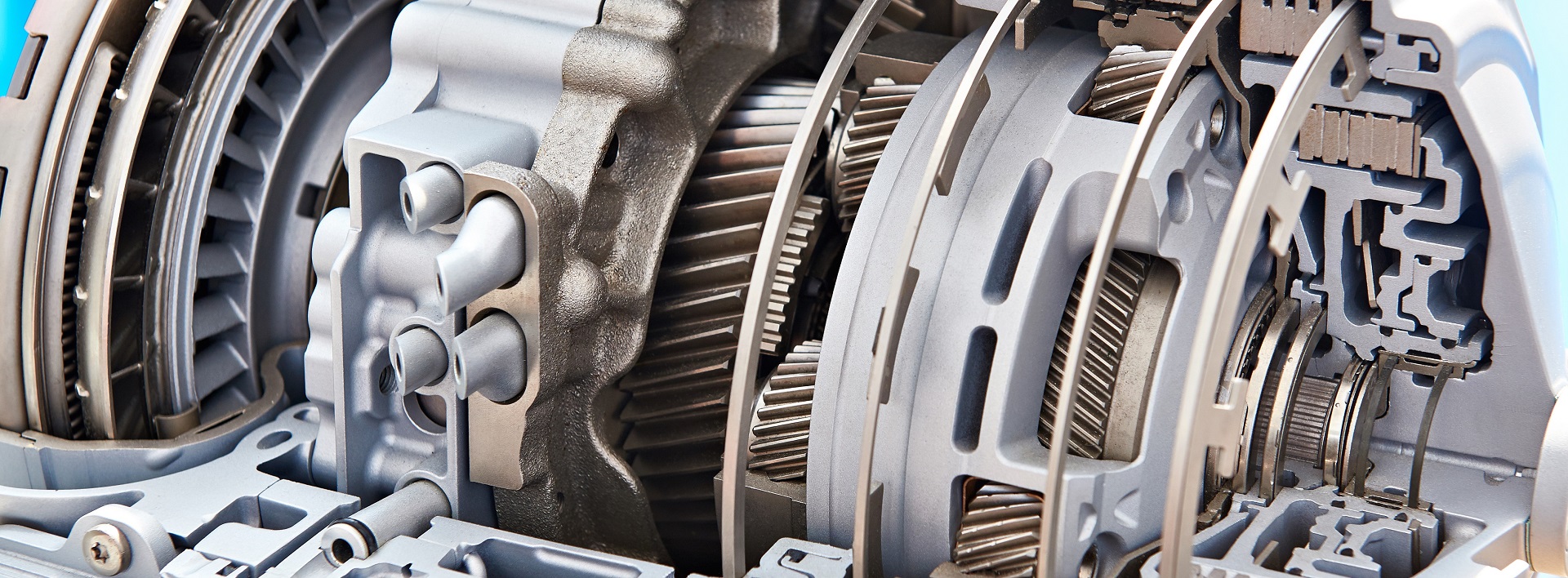How does an automatic transmission work?
In this article you will learn:
- Why was the automatic transmission invented?
- How does an automatic transmission work?
- How to minimize the risk of costly repairs?
The cars with automatic transmissions are nowadays an increasingly common sight on the roads. The popularity of this type of car is growing exponentially, but still a large percentage of drivers have reservations about buying a vehicle with AT. This is usually due to the fact that this mechanism is much more complicated than the manual transmission.
There is a thesis that in the case of more complex equipment, there is an increased likelihood that some part will fail. And such an event - as you can read on Internet forums - means quite a considerable expense. Are these concerns really justified? Or maybe all sorts of skeptics draw too pessimistic scenarios? Before forming an opinion on the automatic transmissions, it is good to know the principle of operation of such transmissions.
Why was the automatic transmission invented?
An automatic transmission is a device that was created to make driving a car easier. The use of this mechanism eliminates the need for manual gear shifting. The basis of the operation of "automatics" is a thorough analysis of the current load of the engine. On the basis of such data, an automatic change of gears occurs. It selects the gear ratio, which should be optimal at any given moment, which has a positive effect on the smoothness of driving. Thanks to the ideal matching of gears, the engine is less overloaded, which consequently translates into lower wear of components. So we can count on achieving higher mileage. It sounds very sensible, so why so many skeptics?
New, meaning more refined!
Drivers who are most reluctant to move to a car with automatic transmission, may still have older solutions in mind. Years ago, such cars were associated with poorer dynamics, which gave them the ‘label’ of vehicles for drivers of advanced age. A serious disadvantage was also increased fuel consumption.
Prejudices that were based on opinions about automatic transmissions from years ago have become somewhat outdated. Automotive engineers wasted no time proposing further innovations. In the new versions, previous imperfections have been largely eliminated. Compared with automatic transmissions of years ago, the speed and smoothness of operation have noticeably improved. Positive surprises may also be the number of ratios offered by such mechanisms and lower fuel consumption than in the past.
Along with the elimination of further shortcomings, however, the level of sophistication of such devices had to increase. Today there are situations in which the automatic transmission is a more complex mechanism than the engine next to it. There is no way out! If you want comfort and automatic selection of optimal gear ratios while driving, you also have to reckon with higher service and repair costs.
How does the automatic transmission work?
To simplify the structure of the automatic transmission, we can say that it usually consists of three units: control system, clutch and transmission system.
Automatic transmissions produced today are saturated with electronic sensors. Their task is to collect parameters, important for the functioning of the transmission. They take into account, among others: temperature and pressure of oil and speed with which rotating parts rotate. The speed at which the car itself moves is also monitored. Only after analyzing such data the system chooses the optimum gear ratio for the conditions.
What does a new user of a car with automatic transmission initially pay attention to? The first thing that usually comes to mind is the absence of a clutch pedal. And here the question arises: has this element been abandoned in automatic? It turns out that the clutch - yes - there is, but its design and operation is fundamentally different from what we associate with the cars equipped with manual transmissions.
Manufacturers often use here the so-called torque converters. The task of such a mechanism is to transfer rotary motion from the active to the passive element, through a fluid (usually it is oil). Why such a choice? A torque converter can provide greater smoothness and better cushioning when engaging the optimum gear ratio. Ease of control is also important (valves can be used to engage the clutch). However, a slight loss of engine power must be reckoned with.
Planetary gear systems are used in ATs. The optimum transmission ratio is achieved by interlocking the respective sets of wheels. Among others, disc clutches, belt brakes or hydraulic cylinders are involved in this process. Friction elements and gear systems need the right oil to work properly. This is extremely important as it has to fulfil a number of functions: from providing optimum lubrication for moving parts to cooling the system.
An element often found in automatic transmissions is a mechanical parking lock system (or "P" mode, which will be discussed later in this article). It usually takes the form of a ratchet, which locks the shafts or baskets, which in turn is supposed to immobilize the wheels to which the drive is transmitted.
How to minimize the risk of costly repairs?
We mentioned at the beginning that the biggest nightmare for drivers of "automatic" vehicles is the vision of repairing the transmission, which may mean having to dig deep into your pocket. Are we really condemned to it? If you make every effort to ensure that the mechanism has optimal conditions for work, it is highly likely that the automatic transmission will serve us a long time. There are several things that we should absolutely remember when operating such vehicles.
Select the correct operating modes
The first thing to pay attention to is the correct choice of the mode in which the gearbox should function. Because although a specific gear ratio will be selected automatically, it is the driver's task to indicate the appropriate range of its work. Errors can lead to damage to the mechanism.
In vehicles with automatic transmissions, we can usually meet with such designations as: D, N, P, and R.
- D (drive) - in this mode all gears are operated that allow you to drive forward.
- N (neutral) - the car is idling, so the transmission does not transfer torque.
- P (parking) - mode that should be set after the car stops. The car is then ‘in neutral’, with the difference that the mechanical wheel lock is activated. Be careful not to activate this function while driving (which is possible with some models of transmissions). Such a mistake can result in serious damage to the transmission.
- R (reverse) - reverse gear.
In newer generation cars you can also meet with the designation S (sport). This mode was created to allow faster gear changes.
Remember the oil
In the case of automatic transmissions, both the right choice and the condition of the lubricant used are of considerable importance. This is important because oil performs several very important tasks here. For example, in a torque converter it is responsible for the gear shifting process. Applying the wrong product can result in overheating, which is asking for failure. To be able to properly match oil, it is necessary to know the technical specifications of the transmission and reach the manufacturer's guidelines. In practice, a wide range of companies producing lubricants makes such a task may not be easy. Therefore, it is worth consulting specialists who will precisely determine the needs of the box installed in the car. You should also regularly check the oil level. It's no secret that too low its level can be the cause of a serious malfunction.
The next issues which are worth taking care of, if we care about minimizing the risk of breakdowns, are: frequency and appropriate method of oil change. Usually such service is performed every 50-60 thousand km (sometimes even a little earlier). Owners of cars with automatic gearboxes are also faced with a dilemma: whether to bet on gravitational (static) oil change or follow modern trends and decide on dynamic oil change. The latter solution, although more expensive, allows to thoroughly get rid of used oil, as well as to wash out internal channels, where contaminants like to hide. In other words, in this way we can take better care of the transmission, which will have a positive impact on the life of the said mechanism.
Vehicles with automatic gearboxes absolutely should not be afraid. If we take care of them, meticulously following all the recommendations of manufacturers, we should long enjoy a comfortable ride.
READ MORE ON AUTOMATIC TRANSMISSIONS OILS:
Contact us for more information:
Phone:
(+40) 21 2320942
E-mail:
office@fuchs.com

